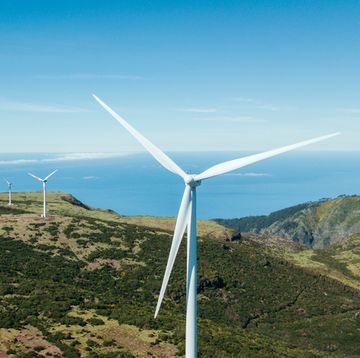- Lithium is a vital element in green technologies such as batteries and electric cars.
- According to a new report, the world’s largest lithium reserve is nestled along the Oregon-Nevada border in an area known as the McDermitt Caldera.
- However, mining the area is controversial, as it’s a sacred land to many indigenous tribes and a valuable habitat for animals like the sage grouse.
Our society needs a few key ingredients if it wants to one day run entirely on electricity. One of those ingredients is lithium (Li), a key chemical element found in green tech like grid storage batteries and electric cars. An estimated 88 million tons of the stuff exists in the world, but only a quarter of that is economically feasible to mine. That’s why large lithium reserves in Chile, Bolivia, and Australia are so valuable.
However, a new report from Lithium Americas Corporation (a mining company), GNS Science, and Oregon State University in the journal Science Advances states that the largest lithium reserve in the world might actually be the McDermitt Caldera, located along the border of Oregon and Nevada.
“Recent calculations…estimate an in situ tonnage of ~20 to 40 MT (million metric tons) of Li…to be contained within sediments of the whole McDermitt caldera,” the report reads. “Even if this estimation is high due to variations in sediment thickness and/or Li grade, the Li inventory contained in McDermitt caldera sediments would still be on par with, if not considerably larger than, the 10.2 MT of Li inventory estimated to be contained in brines beneath the Salar de Uyuni in Bolivia, previously considered the largest Li deposit on Earth.”
So, how did all this lithium get buried in this dry, relatively flat landscape? According to Oregon Public Broadcasting, the same hotspot that now supplies all the volcanic activity at Yellowstone National Park occupied this area of North America. Around 16.4 million years ago, a volcanic explosion that would’ve made the 1980 eruption of Mt. Saint Helens seem quaint rocked the area, and the caldera was filled with alkaline magma rich in sodium, potassium, and lithium.
The explosion also formed a lake—similar to nearby Crater Lake—which stuck around for hundreds of thousands of years and deposited lithium into claybed soils, according to Chemistry World. This new paper suggests that another bout of volcanism dried out the lakebed and exposed it to a brine of lithium and potassium. At the southernmost rim, a lithium-rich clay known as illite replaced lithium deposits at lower concentrations.
This high concentration is found primarily at Thacker Pass in Nevada, and is already a controversial mining location. The area, also known as Peehee Mu'huh, is the homeland of many indigenous tribes and played an important role in its historical clash with U.S. soldiers. An indigenous organization dedicated to protecting the site even called potential mining operations a form of “green colonialism,” and is also engaged in stopping a mining site on the Oregon side of the caldera as well.
Apart from its cultural impact, any mining project in the area could also affect groundwater levels for local farmers and ranchers, not to mention its disruption to local fauna, such as pronghorn antelope, golden eagles, and sage grouse.
Right now, the McDermitt Caldera is a 40 million metric ton lithium conundrum with no clear answer.
Darren lives in Portland, has a cat, and writes/edits about sci-fi and how our world works. You can find his previous stuff at Gizmodo and Paste if you look hard enough.













